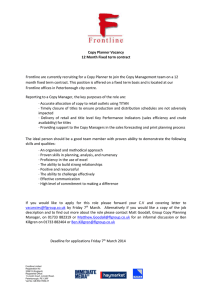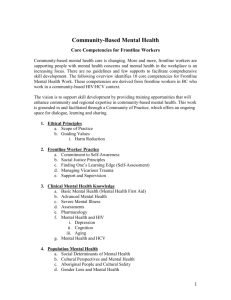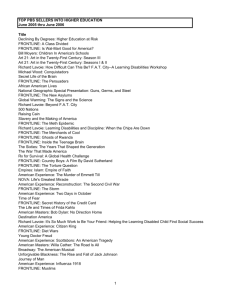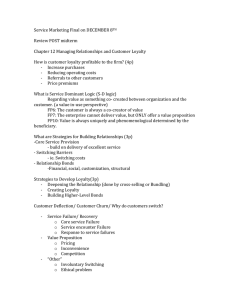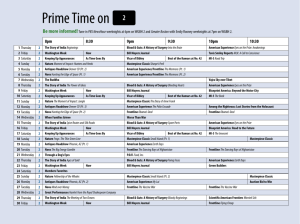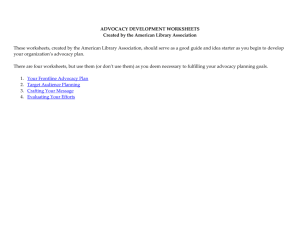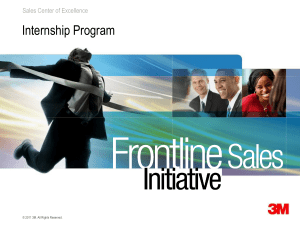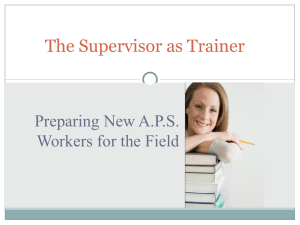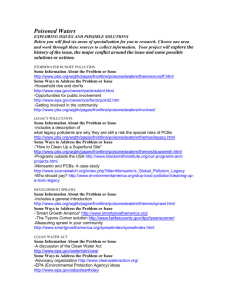File
advertisement
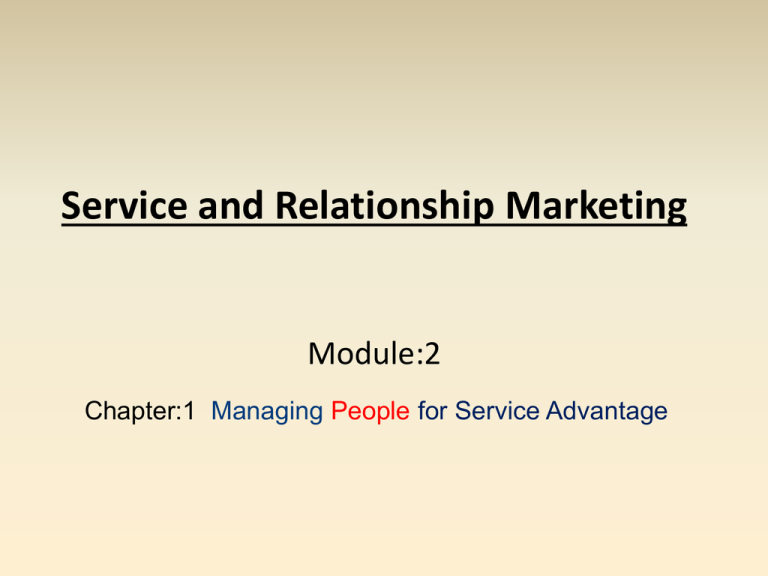
Service and Relationship Marketing Module:2 Chapter:1 Managing People for Service Advantage Service Employees Are Crucially Important Service Personnel: Source of Customer Loyalty & Competitive Advantage • Customer’s perspective: encounter with service staff is most important aspect of a service • Firm’s perspective: frontline is an important source of differentiation and competitive advantage • Frontline is an important driver of customer loyalty – anticipating customer needs – customizing service delivery – building personalized relationships Frontline in Low-Contact Services • Many routine transactions are now conducted without involving frontline staff, e.g., – ATMs (Automated Teller Machines) – IVR (Interactive Voice Response) systems – Websites for reservations/ordering, payment, etc. • However, frontline employees remain crucially important • “Moments of truths” drive customer’s perception of the service firm Factors Contributing to the Difficulty of Frontline Work Boundary Spanning Roles • Boundary spanners link the organization to outside world • Multiplicity of roles often results in service staff having to pursue both operational and marketing goals • Consider management expectations of service staff: – – – – delight customers be fast and efficient in executing operational tasks do selling, cross selling, and up-selling enforce pricing schedules and rate integrity Role Stress in Frontline Employees • Organization vs. Client: Dilemma whether to follow company rules or to satisfy customer demands – This conflict is especially acute in organizations that are not customeroriented • Person vs. Role: Conflicts between what jobs require and employee’s own personality and beliefs – Organizations must instill ‘professionalism’ in frontline staff • Client vs. Client: Conflicts between customers that demand service staff intervention Emotional Labor • “The act of expressing socially desired emotions during service transactions” (Hochschild, The Managed Heart) – Performing emotional labor in response to society’s or management’s display – rules can be stressful Good HR practice emphasizes selective recruitment, training, counseling, strategies to alleviate stress Is Empowerment Always Appropriate? • Empowerment is most appropriate when: – Firm’s business strategy is based on personalized, customized service, and competitive differentiation – Emphasis on extended relationships rather than short-term transactions – Use of complex and non-routine technologies – Service failures are non-routine – Business environment is unpredictable – Managers are comfortable letting employees work independently for benefit of firm and customers – Employees seek to deepen skills and have good interpersonal and group process skills Control vs. Involvement • Empowerment systematically redistributes the following: – Information about operating results and measures of competitive performance – Knowledge/skills that enable employees to understand and contribute to organizational performance – Power to influence work procedures and organizational direction (e.g., quality circles, self-managing teams) – Rewards based on organizational performance (e.g., bonuses, profit sharing, stock ownership) • The Control model concentrates these elements at the top of the organization whereas the Involvement model pushes these features throughout the organization Levels of Employee Involvement Suggestion involvement • Employee makes recommendation through formalized program Job involvement • Employees retrained, supervisors reoriented to facilitate performance High involvement • Information is shared for participation in management decisions • Employees skilled in teamwork, problem solving, etc. • Profit sharing and stock ownership Build High-Performance Service Delivery Teams • The Power of Teamwork in Services – Facilitate communication among team members and knowledge sharing – Higher performance targets – Pressure to perform is high • Creating Successful Service Delivery Teams – Emphasis on cooperation, listening, coaching, and encouraging one another – Understand how to air differences, tell hard truths, ask tough questions – Management needs to set up a structure to steer teams toward success Service Leadership and Culture Service Leadership and Culture • Charismatic/transformational leadership: – Change frontline personnel’s values and goals to be consistent with the firm – Motivate staff to perform at their best • Service culture can be defined as: – Shared perceptions of what is important – Shared values and beliefs of why they are important A strong service culture focuses the entire organization on the frontline, with the top management informed and actively involved The Inverted Organizational Pyramid Internal Marketing • Necessary in large service businesses that operate in widely dispersed sites • Effective internal marketing helps to: – Ensure efficient and satisfactory service delivery – Achieve harmonious and productive working relationships – Build employee trust, respect, and loyalty

